TAGGED AS: hispanic heritage month, movies
It’s an understatement to say that we’ve come a long way from Speedy Gonzalez’s “Andale, andale, arriba, arriba… yeppa!” Though that portrayal of Latinidad, or more specifically Mexicanity, has been shelved to allow for more nuanced cultural representations, I loved the heck out of that mouse growing up. Why? Because I felt seen. I felt that someone in Hollywood knew we had a voice, and that that voice deserved to be heard. (YEPPA! or as we say in Puerto Rico, ¡WEPA!)
And while we can debate bad representation versus no representation over tequila, rón, pisco, maté, caipirinha, mamajuana, etc. ’til the vacas come home, it all starts with someone unapologetically stepping through a door that seemed out of reach. In the celebratory spirit of Hispanic Heritage Month, we raise a glass to 10 talented individuals whose contributions to cinema helped shift the lens on our cultures and build upon a legacy that benefits from our color, accents, and perspectives. Salud!
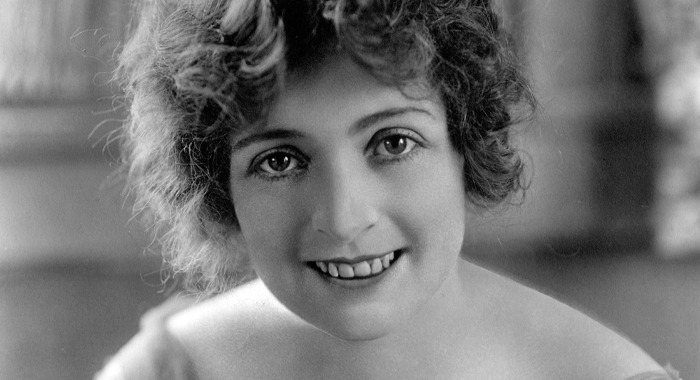
(Photo by Everett Collection)
Myrtle Gonzalez was the first successful Latina actor in Hollywood, landing a studio deal with Universal in 1912. She was also arguably the original influencer – Gonzalez used the trades to promote herself and gained a fair share of followers as a result. She was that cool. This Angelina loved fast cars and action – so much so that she eventually did her own stunts! Yet her talents ran deeper than that. A skilled pianist and gifted soprano, Gonzalez starred in at least 78 silent movies in just 4 years. She was daring in her performances and came to be known as “nature girl.” Though deeply steeped in her paternal Californio roots, she refused to play traditional roles or a woman defined by her ethnicity; her Enid Maitland in Chalice of Courage was critically acclaimed. A light so bright can only shine for so long, unfortunately, and Gonzalez died at 27 of influenza. Ahead of her time, the ephemeral star left us in charge of her dream: to continue portraying real, courageous, and adventurous women on screen.
“[Myrtle Gonzalez] has youth, beauty and temperament, besides a most winning personality, and as this is her first big picture part, it behooves one to notice these things. She gives an excellent portrayal of a young woman of many vicissitudes.” — Grace Kingsley, Los Angeles Times, Sept. 21, 1915
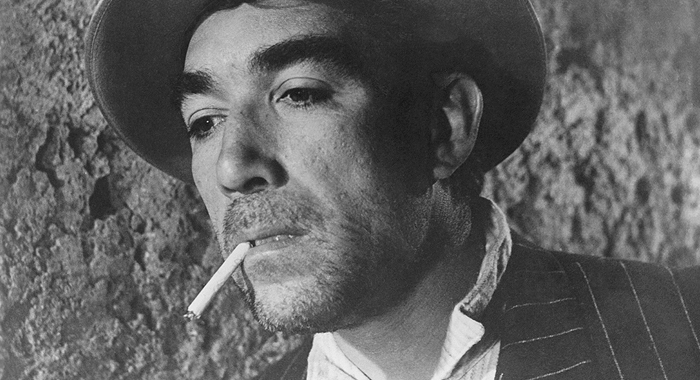
(Photo by Everett Collection)
From Arab sheik to Mexican revolutionary to Greek peasant, Anthony Quinn could do it all. To call him prolific is an understatement. Born in 1915, the Mexican-Indigenous-Irish powerhouse starred in over 100 movies, achieved worldwide fame, and relentlessly pursued experiences that challenged and redefined him. This perfectionism and drive led to a Tony Award and two Academy Awards out of four nominations. A masculine man of great stature, Quinn was best known for the sensitivity and honesty he brought to his performances. In Federico Fellini’s La Strada, Quinn’s brutish Zampanò tapped into an existential suffering that was incredibly affecting, but his favorite role, according to an interview with Dick Cavett, was the aging boxer in Requiem for a Heavyweight. Perhaps it’s the resonance of that knockout ending that hits all of us who have been othered, simplified, and stereotyped. “The Mighty Quinn,” as Bob Dylan reputedly christened him in a song, was a man who rose out of poverty and marginalization to gift us with a legacy that will always seem larger than life. All hail the Quinn!
“Anthony Quinn gives a devastating performance as a man who has no heart or time for kindness until too late. He dominates the screen in compelling and completely capable fashion. What an actor he is!” — Mae Tinee, Chicago Tribune, Jan. 6, 1957
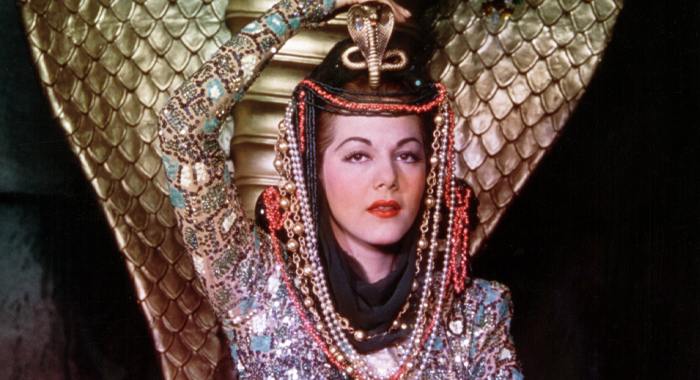
(Photo by Everett Collection)
Crowned “The Queen of Technicolor,” María Montez (aka África Gracia Vidal) was espectacular. A force of nature, this Latina stormed through Hollywood and became the first Dominican to grace the big screen. She headlined a few Universal hits, including Ali Baba and the Forty Thieves and the camp classic Cobra Woman, where she played two roles – both strong and alluring women. Montez had initially built a career as an “ethnically ambiguous” seductress, but she eventually sought to diversify her portfolio. It was difficult to shake those previous expectations, but she refused to be held to them and demanded better opportunities. When none were offered, Montez finagled her way out of her studio contract and co-founded a production company with her husband, French actor and WWII hero Jean-Pierre Aumont, with whom she had a daughter, Tina Aumont. They moved to France, and she went on to star in other pictures, including Revenge of The Pirates. She was not only an actor and a producer, but a writer and a poet. Montez’s tragic and untimely death in 1951 prevented her from furthering her career, but her work will always be cherished and inspire others to follow in the trail she blazed.
“This is one those characterizations in Maria Montez’s repertoire which her admirers will receive with the utmost passion. [Full review in Spanish]” — Cinelandia, December 1943
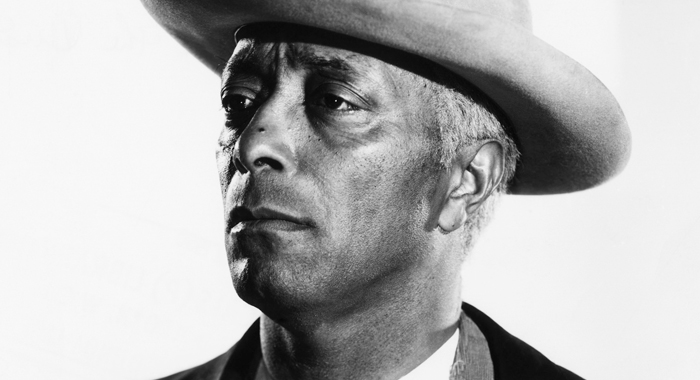
(Photo by Everett Collection)
The first Afro-Latino actor, Puerto Rican Juano Hernandez (nee Huano G. Hernandez, b. 1896) was described by the New York Times’ Bosley Crowther as “quietly magnificent.” Ironically, Hernandez got his start rather unquietly as a boxer and circus performer, but he had more than brawn. A Shakespeare enthusiast, Hernandez wrote and performed in several programs, including the first all-Black soap We Love and Learn. From there, Hernandez stepped onto Broadway and soon after leapt to Hollywood. Due to the narrow perception of Latinos at the time, Hernandez didn’t often get to play roles that truly represented his Caribbean roots, but he became well known and respected for representing the African American community. With understated confidence, Hernandez soulfully played the innocent farmer charged with murder in Intruder in the Dust, which earned him Golden Globe and New York Film Critics award nominations. With over 30 films under his belt, Hernandez starred in classics such as They Call Me Mr. Tibbs! with the Sidney Poitier. He was a pioneer who broke through the racial glass ceiling with confidence and elegance, and he has a star on our Walk of Fame to show for it.
“In this difficult role Juano Hernandez turns in a sensitive and restrained performance. As Lucas Beauchamp he is called up to display canny judgment in the face of fear.” — Harold Rogers, The Christian Science Monitor, Dec. 15, 1949
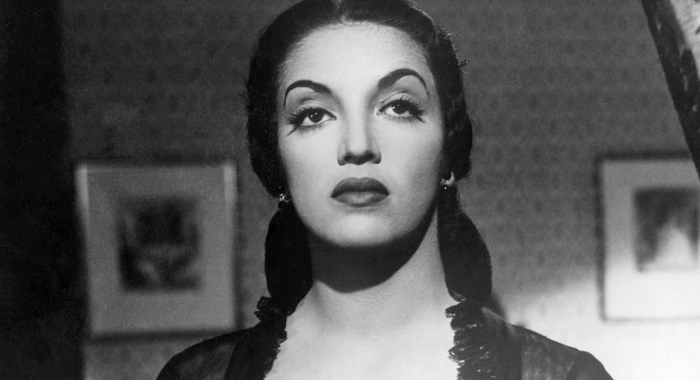
(Photo by Everett Collection)
The first Latina ever nominated for an Oscar, Mexican Katy Jurado (nee María Cristina Estela Marcela Jurado García) starred opposite the biggest movie stars of the time: Marlon Brando, Clark Gable, and Gary Cooper. This scene-stealer landed her first role in 1941 at age 16 despite her parents opposing a career in movies. But nobody puts Katy en la esquina. She wore her Mexicanness proudly, embraced her curves, and refused to be imitative on her way to stardom. Jurado defied the Latina bombshell stereotype by grounding her roles with an undercurrent of vulnerability and wisdom that made her relatable. This innate talent didn’t go unnoticed, and she won a Golden Globe for her unforgettable role as Helen Ramirez in High Noon. She went on to be nominated for an Oscar and 3 Ariels (the Mexican Equivalent). Jurado shared the screen with other Latin powerhouses such as María Félix (La Bandida) and Anthony Quinn and Dolores del Rio (The Children of Sanchez). Her star on the Hollywood Walk of Fame may validate her talent, but it is her moxie that will continue to inspire others to kick open closed doors.
“Katy is well known as a Mexican film star, but she has appeared importantly in only one other American-made film, ‘The Prizefighter and the Lady.’ She has an impressive personality.” — Kate Cameron, New York Daily News, July 25, 1952

(Photo by Everett Collection)
Raúl Juliá is Rey to most of us Puerto Ricans. In 1964, at age 24, Juliá moved to New York and got his first laurels on Broadway. This Tony Award nominee shared the stage with heavyweights such as Meryl Streep and Christopher Walken before landing a part in 1971 Palm d’Or nominee The Panic in Needle Park, starring Al Pacino, which opened the gateway for prominent roles in several films, including Tempest and Kiss of the Spider Woman. Juliá bewitched us with his pencil mustache and delightfully macabre tango skills (and the Mamushka!) in The Addams Family and Addams Family Values. (And if you don’t have a costume for Halloween this year, you’re welcome.) He brought class, charisma, and humanity to every role he played, no matter how outlandish. Off screen, he was an ardent social activist who fought against hunger and fostered the advancement of minorities. When he passed away from cancer in 1994, millions mourned the man who instilled pride in our culture and hope for our future. Juliá’s work lives on as a testament of unparalleled talent and contagious determination.
“[Anjelica] Huston and Julia are delightfully romantic and darkly sexy as Morticia and Gomez. Julia, in particular, brings the film zest with the lively thrust and parry of his wit.” — Jack Garner, Rochester Democrat and Chronicle, Nov. 18, 1993
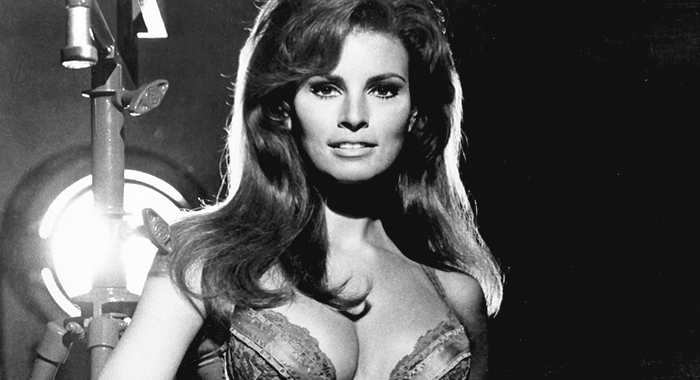
(Photo by ©20th Century Fox Film Corp.)
Like most first-generation Hispanic children in the ’40s, Jo-Raquel Tejada (aka Raquel Welch) was raised to suppress her Bolivian heritage and assimilate into American culture. Welch was a beauty queen and a ballet dancer until she was told she didn’t have a future in it because of her figure; ironically, that same figure turned her into one of the most coveted pin-up girls of the century. As she pirouetted towards an acting career, her manager convinced her to ditch her last name and use her husband’s in order to diversify her opportunities. But when studios insisted she also change her name to Debbie, she put her foot down. Welch reached star status with Fantastic Voyage, proving that Raquel (the name and the woman) was extraordinary. As the incandescent Lust in Bedazzled, she makes an unforgettable impact with only seven lines. Searching to be more than the woman in the “fuzzy britches,” (Shawshank Redemption reference alert!), she played Hannie Caulder, an inspiration for The Bride in Kill Bill. Throughout her stellar career, Welch earned a Golden Globe for her performance in The Three Musketeers and an Imagen Foundation Lifetime Achievement Award for positive promotion of Latin Heritage. After struggling with the pressure to assume the persona of an ethnically ambiguous bombshell, Welch reconciled with her Latine roots. She embraced her identity, and by doing so, she encouraged generations of fans to cherish their own singularity.
“Raquel Welch, as Lust… is devastating in red bikini-costume and reveals an excellent sense of humor.” — Jack Helsel, Philadelphia Daily News, March 14, 1968
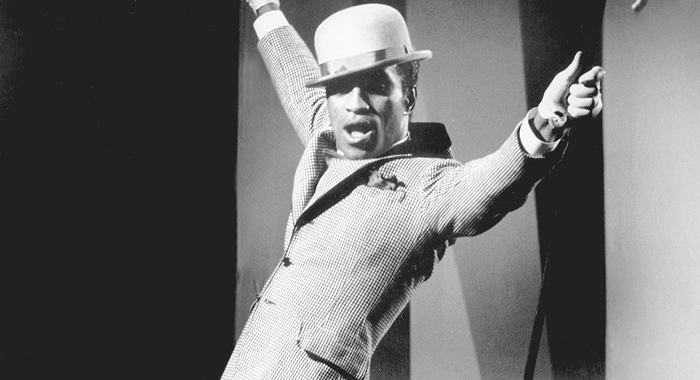
(Photo by Everett Collection)
This triple threat of a man was destined to be one of the greatest performers of all time. Born in Harlem in 1925 to Vaudevillian parents – his mother of Cuban descent and his father African American – Sammy Davis Jr. took to tap dancing and singing from an early age. An Afro-Latino man who grew up touring with a loving community of artists, he was shielded from the horrors of prejudice until he was drafted in 1943. Davis endured cruelty and abuse in the military, brutally beaten so many times his nose lost its shape. Years later, a car accident took his eye, but he wore it well. Davis became a member of the Rat Pack and crooned his way into millions of hearts. Around that time, he played Sportin’ Life in Porgy and Bess and was the “sharpest, most insinuating figure in the show,” according to the New York Times. He went on to appear in Oceans 11 among other productions that earned him Emmy, Golden Globe, and Tony Award nominations. Mister Show Business once said he wanted to be remembered as an entertainer and as someone who helped make things a little better. This legend sure broke color barriers and paved the way in his graceful soft-shoe for other marginalized fellows to follow. Now, who can fill those shoes is a different story.
“Sammy Davis, the most diminutive of the Sportin’ Lifes ever to essay the role, seems to realize his lack of physical stature and breathes life into a pint-size Sportin’ Life character with a slithering performance of the gent that’s all his own and could never be duplicated by a jury of his peers.” — Chazz Crawford, California Eagle, July 23, 1959
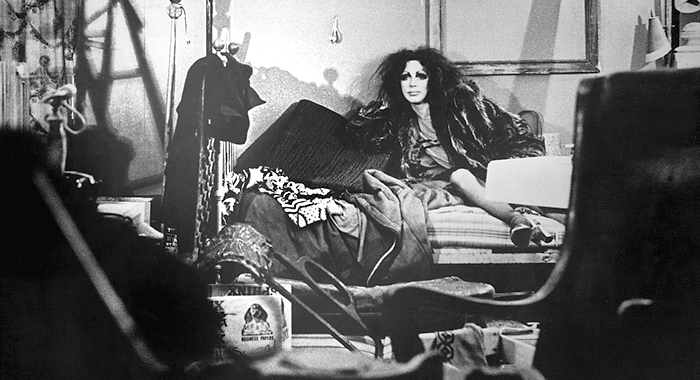
(Photo by Everett Collection)
Anyone familiar with Lou Reed’s “Walk on the Wild Side” may know that Holly hitchhiked her way across the U.S.A. but may not know that she originally hailed from Puerto Rico. She landed in New York where she became an acclaimed drag queen, showgirl, and cabaret artist who eventually became an Andy Warhol superstar; her breakthrough role was in Warhol’s cult classic Trash. In his review of the film, the New York Times’ Vincent Canby said: “Holly Woodlawn, especially, is something to behold.” And indeed, many agreed. Woodlawn’s joie de vivre could ignite the coldest of hearts. There were rumors at the time that she deserved a nomination for her performance in Trash, but narrow views on gender fluidity may have impeded her accomplishment. Woodlawn went on to star in other films, notably Women in Revolt, and her last appearance was on Transparent, before she died in Los Angeles of cancer complications in 2015. Famously quoted for saying that her “star would flicker for two seconds and that was it,” we’re here to say that she was wrong – her flame is unextinguishable. The contributions the memorable Woodlawn made to the Latine and LGTBQ+ communities are, like her, wildly significant.
“It’s bilge but fascinating bilge and thanks to Miss Woodlawn sometimes very funny, very delightful bilge.” — Bill Morrison, News & Observer (Raleigh, NC), March 5, 1971
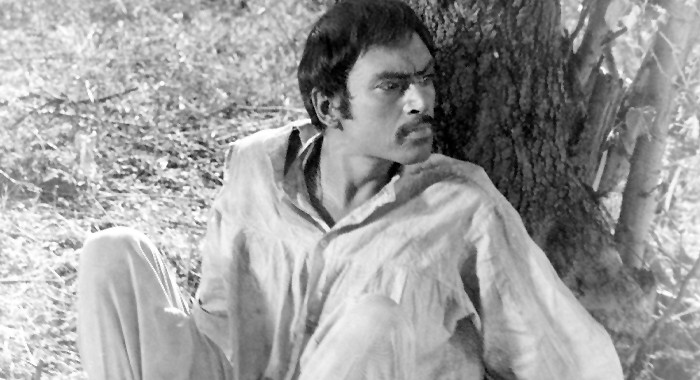
(Photo by Everett Collection)
An emblem of Mexicanity, Pedro Armendáriz (nee Pedro García Armendáriz Hastings) was one of the first crossover actors to make it in Hollywood. Born in in 1912 in Mexico City, Armendáriz was reportedly discovered while reciting a Hamlet monologue during a tour he was guiding. The tall, green-eyed man known for playing Pancho Villa soon became a prestigious actor of international acclaim, commanding the screen whether playing a noble indigenous, a corrupt bandido, or a fervent military official. Appearing in more than 120 films, this Dios of the Golden Age of Mexican Cinema left us with an invaluable legacy: Fort Apache, 3 Godfathers, and El Bruto, among others. In the cinematic La Perla, filmed in English and Spanish, Armendáriz tugged our heartstrings as Kino. He won an Ariel for his performance, and the film went on to be included in the National Film Registry in the Library of Congress. His last role was in From Russia with Love, as 007’s ally; before the film was released, Armendáriz shot himself in the heart before his terminal cancer could kill him. Despite playing an array of stereotypical or ethnically incongruous characters, Armendáriz elevated each role he played, and because of his layered interpretations, he created room for these opportunities to be expanded beyond a person’s color.
“The acting has been superb, superior to much that passes for acting in Hollywood-made pictures… The unforgettable face of Pedro Armendariz the pearl-finder sticks in the mind, too. It Is a beautiful face.” — Doris Reno, Miami Herald, July 22, 1949
Archival curation and research for this feature was led by Tim Ryan. Additional review curation by Rob Fowler.
Thumbnail images by Everett Collection